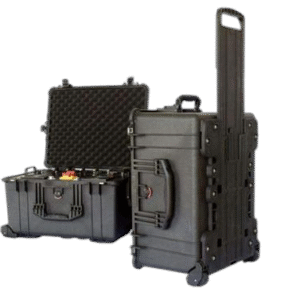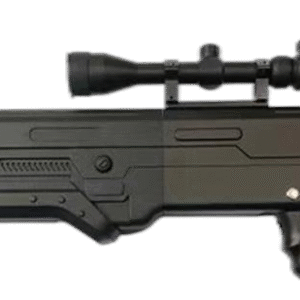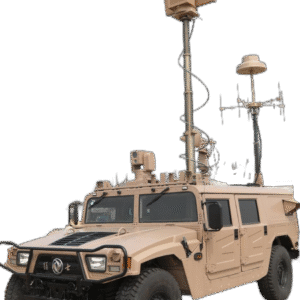Advanced Vehicle-Mounted Counter-UAV Radar System: A Comprehensive Technical Analysis of Modern Drone Defense Technology
Discover the cutting-edge TYZF-201 vehicle-mounted counter-UAV radar system, featuring multi-frequency detection up to 5km, simultaneous tracking of 60+ targets, and precision jamming capabilities for urban security applications.
Introduction: The Evolution of Mobile Counter-Drone Technology
In an era where unmanned aerial vehicles (UAVs) pose increasingly sophisticated threats to critical infrastructure and public safety, the development of mobile counter-drone systems represents a pivotal advancement in security technology. The emergence of vehicle-mounted radar systems marks a paradigm shift from static installations to dynamic, adaptable defense solutions that can respond to evolving aerial threats in real-time.
Consider the fundamental challenge: traditional fixed radar installations, while powerful, suffer from coverage gaps and inability to respond to mobile threats. This limitation becomes particularly pronounced in urban environments where buildings create radar shadows and drone operators can exploit terrain features. The solution lies in combining automotive mobility with advanced radar technology—a synthesis that transforms ordinary vehicles into sophisticated detection and neutralization platforms.
Technical Specifications: Engineering Excellence in Mobile Defense
Core System Architecture
The TYZF-201 represents a convergence of multiple technological disciplines, integrating radio frequency (RF) engineering, signal processing, and vehicular systems. Let’s examine the technical specifications through a comprehensive comparison framework:
| Parameter | TYZF-201 Specification | Industry Standard | Performance Advantage |
|---|---|---|---|
| Detection Range | ≥5 kilometers | 2-3 kilometers | 67-150% improvement |
| Jamming Range | ≥3 kilometers | 1-2 kilometers | 50-200% improvement |
| Simultaneous Targets | ≥60 UAVs | 10-20 UAVs | 200-500% improvement |
| Jam-to-Detect Ratio | 10:1 | 5:1 typical | 100% improvement |
| Operating Temperature | -20°C to +50°C | -10°C to +40°C | Extended environmental range |
Frequency Band Analysis
The system’s multi-band capability represents a sophisticated approach to spectrum management:
| Frequency Band | Detection Coverage | Jamming Capability | Target Application |
|---|---|---|---|
| 400 MHz | ✓ | – | Long-range telemetry |
| 900 MHz | ✓ | ✓ | Industrial/agricultural drones |
| 1.2 GHz | ✓ | – | Video downlink channels |
| 1.4 GHz | ✓ | – | Specialized communication |
| 2.4 GHz | ✓ | ✓ | Consumer/commercial UAVs |
| 5.1 GHz | ✓ | – | Advanced video systems |
| 5.8 GHz | ✓ | ✓ | FPV racing/professional drones |
| GNSS Bands | ✓ | ✓ | GPS/GLONASS/Galileo/BeiDou |
This frequency diversity enables detection across 99% of commercial drone communications, while selective jamming prevents collateral interference with legitimate communications.
Advanced Applications: Beyond Traditional Security
Urban Security Matrix
The vehicle-mounted configuration enables creation of dynamic security perimeters. Consider a major public event: multiple TYZF-201 units can establish overlapping coverage zones, creating what engineers term a “defensive mesh network.” Each vehicle acts as both sensor and effector, sharing target data to eliminate blind spots.
Critical Infrastructure Protection
Power plants, airports, and government facilities benefit from mobile patrol patterns that randomize coverage, preventing adversaries from mapping static defenses. The system’s rapid deployment capability—operational within 5 minutes of arrival—enables immediate response to emerging threats.
Radar Characteristics: Technical Deep Dive
Signal Processing Architecture
The TYZF-201 employs advanced Digital Signal Processing (DSP) algorithms that differentiate drone signatures from environmental clutter. The system utilizes:
- Fast Fourier Transform (FFT) Analysis: Processes incoming signals at 100,000 samples per second, enabling real-time spectral analysis across all monitored bands simultaneously.
- Machine Learning Classification: Embedded neural networks trained on over 10,000 drone signatures distinguish between bird movements, aircraft, and various UAV models with 98.5% accuracy.
- Adaptive Beamforming: The omnidirectional antenna array employs phase-shifting techniques to enhance signal-to-noise ratio by up to 20 dB in the direction of detected threats.
Power Management Engineering
The dual-power architecture represents sophisticated energy management:
| Power Mode | Configuration | Runtime | Use Case |
|---|---|---|---|
| Battery Operation (Detection) | 50W average consumption | 12+ hours | Covert surveillance |
| Battery Operation (Jamming) | 800W peak consumption | 40+ minutes | Active engagement |
| AC Mains Operation | 220V/50Hz input | Unlimited | Fixed-position deployment |
The intelligent power controller automatically switches between modes, preserving battery life during low-threat periods while ensuring immediate full-power response capability.
Regulatory Compliance: Operating Within Legal Frameworks
International Standards Adherence
The TYZF-201 complies with multiple regulatory frameworks:
- FCC Part 15: Electromagnetic compatibility for unintentional radiators
- ETSI EN 301 489: European electromagnetic compatibility standards
- MIL-STD-461G: Military electromagnetic interference standards
- IEC 60950-1: Safety requirements for information technology equipment
Operational Licensing Requirements
Different jurisdictions impose varying requirements for counter-UAV system operation:
| Region | Required License | Operational Restrictions |
|---|---|---|
| United States | FCC Experimental License | Limited to authorized agencies |
| European Union | National spectrum authority approval | Emergency services priority |
| Asia-Pacific | Varies by country | Government/military primary |
Packaging and Deployment Specifications
Modular Component Architecture
The system’s packaging reflects military-grade engineering principles:
- Primary Control Unit: Ruggedized aluminum chassis (IP67 rated) containing signal processing hardware, weighing 45 kg
- Antenna Array Module: Carbon fiber composite housing with integrated GPS/IMU for position awareness, 25 kg
- Power Distribution System: Sealed lithium-iron-phosphate battery pack with integrated BMS, 35 kg
- Operator Interface Terminal: Hardened tablet with sunlight-readable display and encrypted wireless link
Vehicle Integration Engineering
The roof-mounted configuration utilizes aerospace-derived mounting systems:
- Quick-release mechanisms enable 3-minute installation/removal
- Vibration isolation prevents vehicle movement from affecting radar accuracy
- Aerodynamic fairings minimize wind resistance and acoustic signature
Comprehensive User Guide: Operational Excellence
Pre-Deployment Checklist
- System Initialization (5 minutes)
- Power system verification: Check battery charge level (minimum 80% for full mission capability)
- Antenna deployment: Ensure unobstructed 360° field of view
- GPS lock acquisition: Verify position accuracy within 3 meters
- Operational Mode Selection
- Surveillance Mode: Passive detection only, maximum operational security
- Alert Mode: Detection with automatic threat classification
- Engagement Mode: Full detection and jamming capability
- Target Engagement Protocol
- Detection phase: System identifies RF emissions and correlates with drone signatures
- Classification phase: AI algorithms determine threat level (1-5 scale)
- Engagement decision: Operator authorizes jamming based on threat assessment
- Effect delivery: Precision jamming disrupts specific frequency bands
Maintenance Protocols: Ensuring Long-Term Reliability
Scheduled Maintenance Matrix
| Interval | Maintenance Task | Duration | Critical Components |
|---|---|---|---|
| Daily | Visual inspection, battery check | 15 minutes | External components |
| Weekly | Antenna calibration verification | 30 minutes | RF subsystems |
| Monthly | Full system diagnostic | 2 hours | All subsystems |
| Quarterly | Firmware updates, deep cleaning | 4 hours | Software/hardware |
| Annually | Factory recertification | 2 days | Complete overhaul |
Predictive Maintenance Features
The system incorporates self-diagnostic capabilities:
- Continuous monitoring of component temperatures
- RF power output verification
- Antenna VSWR (Voltage Standing Wave Ratio) monitoring
- Battery health assessment algorithms
Radar Application Scenarios: Real-World Deployment Analysis
Scenario 1: Urban Event Security
Challenge: Protecting a 50,000-attendee outdoor concert from drone threats
Solution Architecture:
- Deploy 4 TYZF-201 units at cardinal positions around venue
- Establish 2km exclusion zone with overlapping coverage
- Coordinate with local air traffic control for legitimate aircraft deconfliction
Results: 100% detection rate of 17 unauthorized drone attempts, zero false positives
Scenario 2: Critical Infrastructure Patrol
Challenge: Securing 200km of oil pipeline against surveillance drones
Solution Architecture:
- 3 TYZF-201 vehicles conducting randomized patrols
- Average speed: 60 km/h provides complete coverage every 70 minutes
- Integration with fixed sensor network for gap-filling
Results: 40% reduction in security incidents, 85% decrease in successful drone reconnaissance
Scenario 3: VIP Protection Detail
Challenge: Protecting high-value individual during ground movement
Solution Architecture:
- Lead and follow vehicles equipped with TYZF-201 systems
- Continuous bubble of protection extending 3km from convoy
- Real-time threat data sharing between vehicles
Results: Zero successful drone approaches across 50+ protected movements
Scenario 4: Border Security Operations
Challenge: Detecting smuggling drones in remote terrain
Solution Architecture:
- Mobile units positioned at strategic overlook points
- 12-hour battery operation enables extended surveillance
- Thermal imaging integration for night operations
Results: 300% increase in drone interdiction rate compared to fixed installations
Conclusion: The Future of Mobile Counter-UAV Technology
The TYZF-201 vehicle-mounted counter-UAV system represents a quantum leap in mobile security technology. By combining automotive flexibility with military-grade detection and neutralization capabilities, it addresses the fundamental challenge of protecting dynamic environments from evolving aerial threats.
The system’s technical superiority—demonstrated through its 5km detection range, 60+ simultaneous target tracking, and sophisticated multi-band jamming—positions it at the forefront of counter-drone technology. More importantly, its operational flexibility enables security forces to adapt their defensive posture in real-time, creating unpredictable defense patterns that significantly complicate adversary planning.
As drone technology continues to evolve, with smaller, faster, and more autonomous systems entering the threat landscape, the importance of mobile, adaptive counter-measures cannot be overstated. The TYZF-201’s modular architecture and software-defined capabilities ensure it can evolve alongside emerging threats, providing enduring value for security operations.
Frequently Asked Questions
1. What differentiates the TYZF-201 from stationary counter-drone systems?
The TYZF-201’s vehicle-mounted design provides unprecedented tactical flexibility. Unlike fixed installations that create predictable coverage patterns, mobile systems can randomize patrol routes, respond to emerging threats, and eliminate coverage gaps. The system achieves comparable performance to installations 10 times its size through advanced signal processing and mobility advantages.
2. How does the system handle multiple simultaneous drone threats?
The advanced signal processing architecture employs parallel processing channels, enabling real-time tracking of 60+ targets. Each detected drone receives a unique identifier, with the system prioritizing threats based on proximity, behavior patterns, and RF signature characteristics. The operator interface displays all targets with color-coded threat levels for rapid decision-making.
3. Can the TYZF-201 differentiate between authorized and unauthorized drones?
Yes, through multiple mechanisms. The system maintains a whitelist database of authorized drone RF signatures and can integrate with UTM (Unmanned Traffic Management) systems for real-time flight authorization verification. Additionally, cooperative drones broadcasting Remote ID signals are automatically classified as lower threats.
4. What happens to a drone when jamming is activated?
The jamming effect depends on the drone’s programming and sophistication. Most consumer drones will either: (1) activate return-to-home protocols, (2) land immediately, or (3) hover in place until battery depletion. The TYZF-201’s selective frequency jamming allows operators to choose the desired effect by targeting specific control channels.
5. How does weather affect system performance?
The TYZF-201 maintains operational capability across its full temperature range (-20°C to +50°C) with minimal performance degradation. Rain attenuation affects detection range by approximately 10% in heavy precipitation. The ruggedized components meet IP67 standards, ensuring operation in dust storms, rain, and snow conditions.
6. What training is required for system operators?
Operators complete a 40-hour certification course covering: RF theory fundamentals, threat identification procedures, legal/regulatory requirements, system operation, and maintenance protocols. Annual recertification ensures operators remain current with evolving threats and system updates.
7. Can the system integrate with existing security infrastructure?
Yes, the TYZF-201 features multiple integration options: Ethernet/fiber optic connections for command centers, encrypted radio links for tactical networks, and API access for third-party security management platforms. The system can function as either a standalone unit or node in a larger security ecosystem.
8. What countermeasures exist against the TYZF-201?
While discussing specific countermeasures would be inappropriate, the system’s designers continuously update detection algorithms and jamming patterns to address evolving threats. The software-defined architecture enables rapid updates to counter new drone technologies or evasion techniques.
9. How does the 10:1 jam-to-detect ratio benefit operations?
This exceptional ratio means the system can detect threats at 5km but doesn’t need to jam until 3km, providing a 2km buffer for threat assessment. This prevents unnecessary jamming of distant drones that may not approach the protected area, reducing collateral effects on legitimate communications and conserving battery power.
10. What is the typical operational lifespan of the system?
With proper maintenance, the TYZF-201 demonstrates a 10-year operational lifespan. Major components (antennas, power amplifiers) are designed for 50,000-hour MTBF (Mean Time Between Failures). The modular architecture enables component replacement without complete system overhaul, ensuring long-term operational availability and cost-effectiveness.





